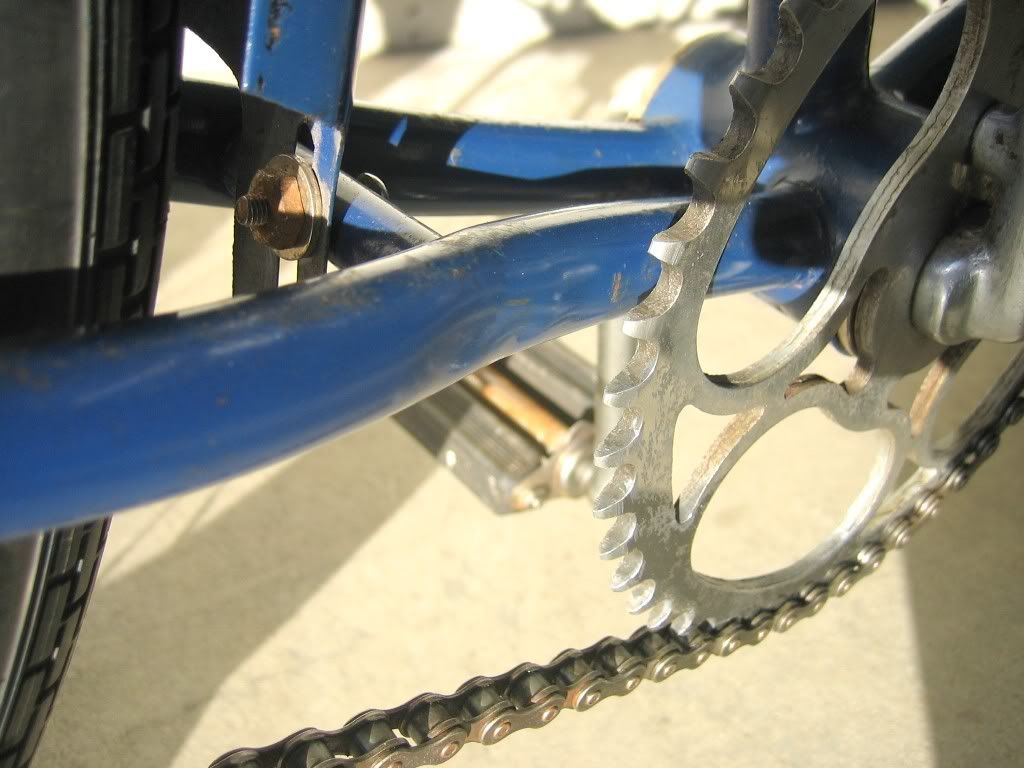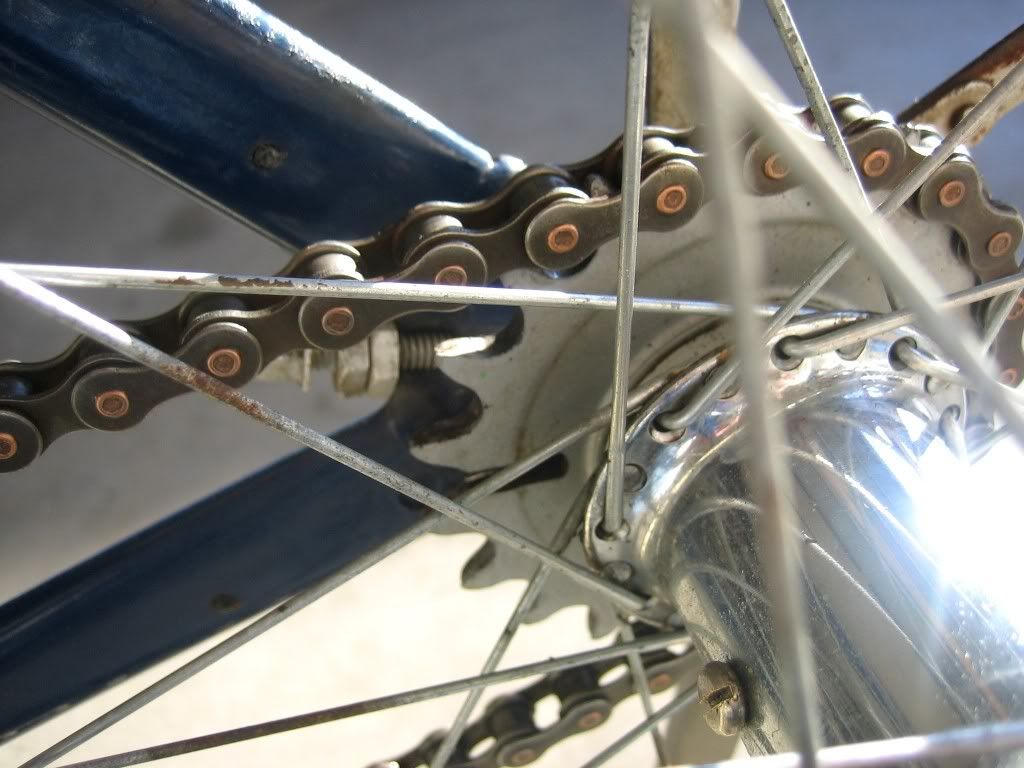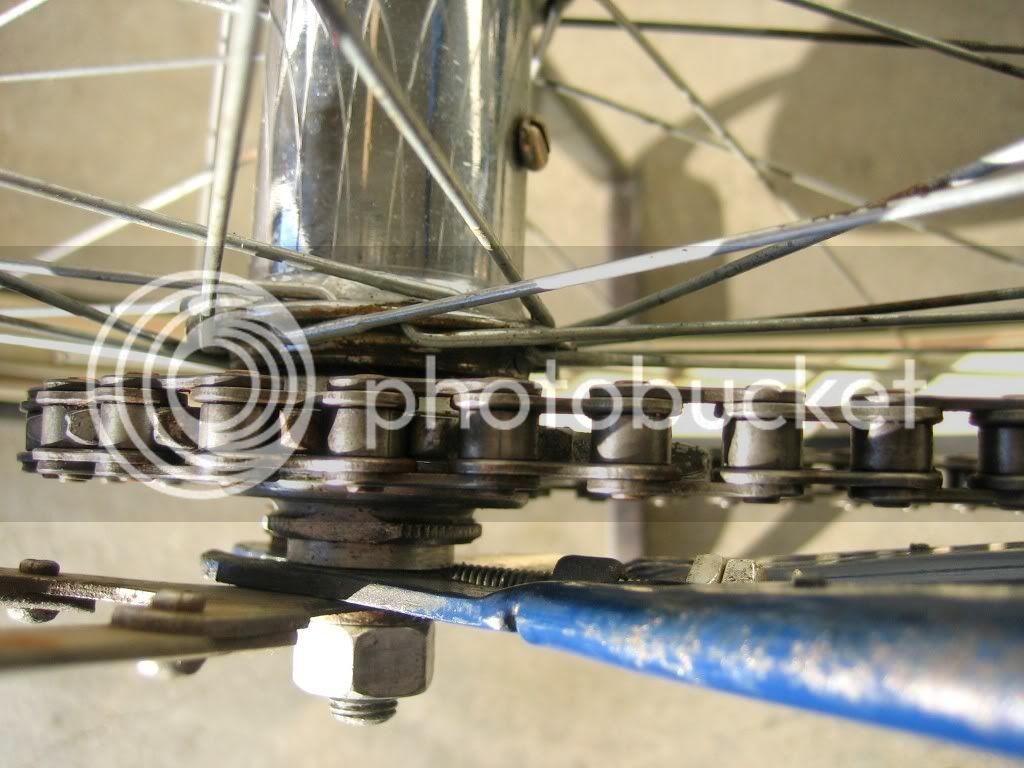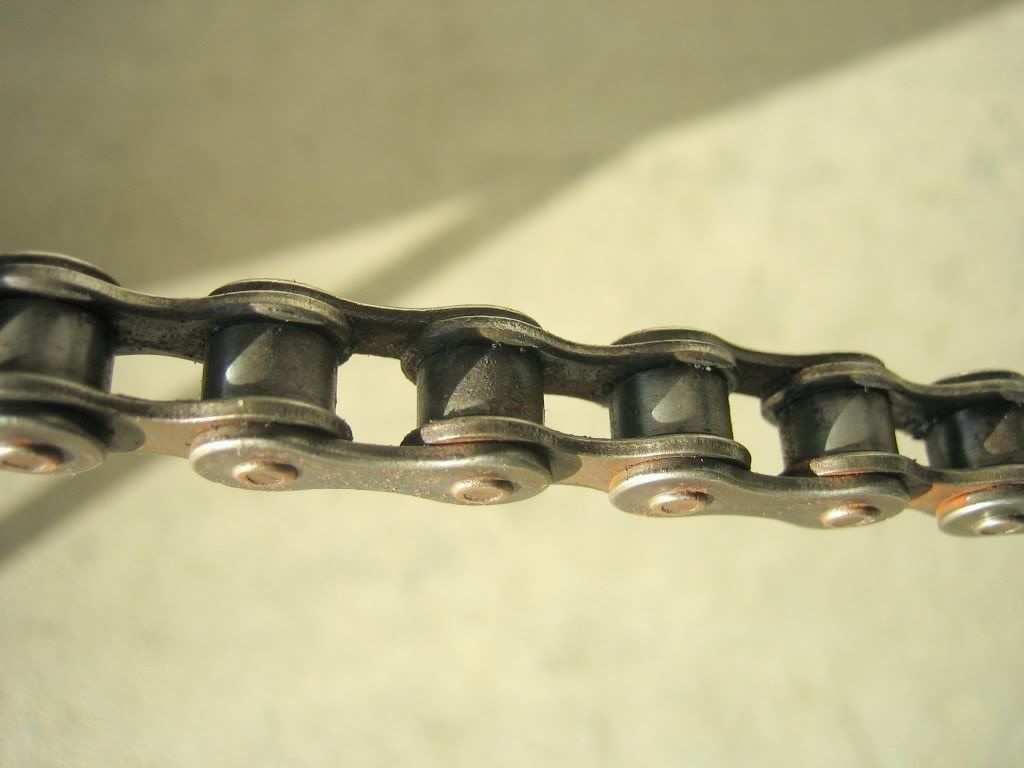Block Chain
An obsolete type of chain, formerly popular with track racers.
Block chain had solid blocks as inner links, without rollers. It had a 1" pitch with 3/16" wide blocks, the same as the "skip link" roller chain that appeared on the market about 1930 to replace it.
The remaining stock of block chain was coveted by track riders who believed it was the only chain strong enough to withstand their imagined strength. When the stock of block chains finally ran out in the late 1970's, it was replaced by 1/2" pitch 3/32" wide chain, as used with derailers, although track riders still prefer an 1/8" wide chain, believing they are stronger than other riders. MTB's with 22 tooth granny chainwheels produce several times the chain tension any track rider can muster.











